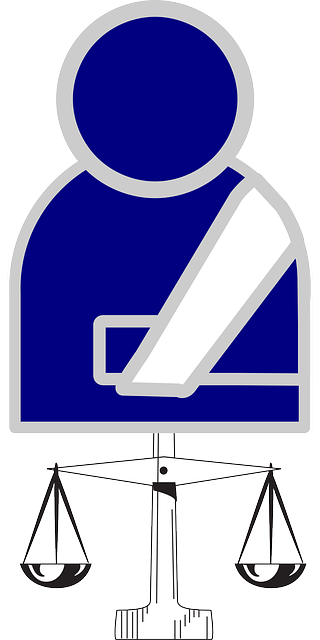Employment law complaints are a critical tool for ensuring workplace fairness, addressing issues like discrimination, harassment, and wrongful termination. Filing a successful complaint involves several key steps: identifying the legal basis, gathering essential documents within statute of limitations, navigating jurisdiction-specific laws, and presenting clear, detailed claims supported by evidence. Early engagement with specialized legal professionals can streamline this process, ultimately enhancing chances of a favorable outcome through settlement or trial. Understanding and meticulously following these Steps to File an Employment Law Complaint is crucial for both corporate and individual clients seeking justice in business, philanthropy, and politics.
Litigation Support Services offers comprehensive guidance on navigating complex employment law complaints. Understanding these processes is crucial for both employees and employers. This article breaks down essential steps, from understanding the nature of employment law disputes to filing robust complaints. We explore effective evidence gathering strategies and the value of legal representation. Additionally, we provide insights into the litigation process, ensuring you’re prepared at every stage, especially when taking those steps to file an employment law complaint.
- Understanding Employment Law Complaints: What They Entail
- Steps to File an Effective Employment Law Complaint
- Gathering Evidence and Documentation
- Legal Representation: When and How to Engage a Lawyer
- Navigating the Litigation Process: From Filing to Resolution
Understanding Employment Law Complaints: What They Entail

Employment law complaints are a crucial aspect of ensuring fair treatment in the workplace. When an employee feels their rights have been violated, understanding the steps to file an employment law complaint is essential. The process involves documenting all relevant details, including dates, locations, and specific instances of misconduct, which serve as evidence to support the claim.
These complaints often cover a range of issues, from discrimination based on race, gender, or age to harassment, wrongful termination, and even white-collar and economic crimes. Navigating these legalities requires careful consideration of state and federal laws. While many cases are resolved through alternative dispute resolution methods, some may progress to jury trials, where the goal is to secure winning challenging defense verdicts for the aggrieved party.
Steps to File an Effective Employment Law Complaint

Filing an effective employment law complaint is a crucial step for both corporate and individual clients seeking justice. The initial steps involve identifying the legal basis for the claim, gathering relevant documents, and ensuring compliance with applicable statutes of limitations. This process demands a thorough understanding of employment laws and regulations specific to your jurisdiction. Engaging legal professionals who specialize in employment law can significantly enhance the chances of success. They will guide you through all stages of the investigative and enforcement process, ensuring your complaint is well-structured and compelling.
Once determined, the complaint should clearly articulate the violations, providing specific examples and relevant dates. This includes detailing discriminatory practices, unfair labor practices, or breaches of employment contracts. It’s essential to include any relevant communications, contracts, performance reviews, or disciplinary actions in support of your claim. This comprehensive approach demonstrates a genuine effort to resolve the issue and strengthens your case for advocacy within philanthropic and political communities.
Gathering Evidence and Documentation

When initiating the steps to file an employment law complaint, a thorough gathering of evidence and documentation is paramount. This process involves sifting through emails, memoranda, payroll records, and any other relevant documents that can substantiate the claim. It’s crucial to organize these materials chronologically and categorically, ensuring they are easily accessible during the legal proceedings.
Additionally, witness statements should be obtained from individuals who have firsthand knowledge of the alleged violations. This step is vital as it provides an independent perspective on the incident(s) in question, which can significantly strengthen the case. Remember that a complete and well-documented record is key to achieving a favorable outcome, whether through settlement or trial, and ultimately leading to the respective business, philanthropic, and political communities being served justly.
Legal Representation: When and How to Engage a Lawyer

When considering legal representation for an employment law complaint, it’s crucial to understand when and how to engage a lawyer. The steps to file an employment law complaint involve several key considerations. Firstly, assess your case and determine if legal action is necessary. This often requires understanding applicable laws and regulations, as well as the strength of your evidence. Consulting with a qualified attorney can help you navigate these complexities and assess the feasibility of your claim.
If proceeding legally, select a lawyer specializing in employment law who has experience across the country. Their expertise will be invaluable during all stages of the investigative and enforcement process. Engaging legal counsel early can significantly enhance your chances of achieving a favorable outcome, whether through settlement negotiations or winning challenging defense verdicts.
Navigating the Litigation Process: From Filing to Resolution

Navigating the litigation process can be complex, especially for those new to employment law. The journey begins with understanding the specific steps to file an employment law complaint. This involves a thorough review of the facts and laws applicable to the case, followed by drafting and filing the initial documents with the court. It’s crucial to ensure these steps are executed accurately to avoid delays and potential setbacks.
As the process unfolds, both parties engage in discovery—a critical phase where evidence is exchanged and scrutinized. This can include requests for documents, depositions, and expert opinions. In high-stakes cases, this stage becomes even more intricate, with each side striving to achieve extraordinary results. Ultimately, the case may progress to hearings, mediation, or jury trials, depending on the complexities and the preferences of those involved.
When navigating employment law complaints, understanding the process is key. By familiarizing yourself with the steps to file an employment law complaint, gathering necessary evidence, and seeking legal representation when needed, you can confidently navigate the litigation process. From initial filing to resolution, each stage requires strategic planning and adherence to legal procedures. Armed with knowledge and professional guidance, individuals and organizations alike can secure fair outcomes and ensure compliance with employment laws.






